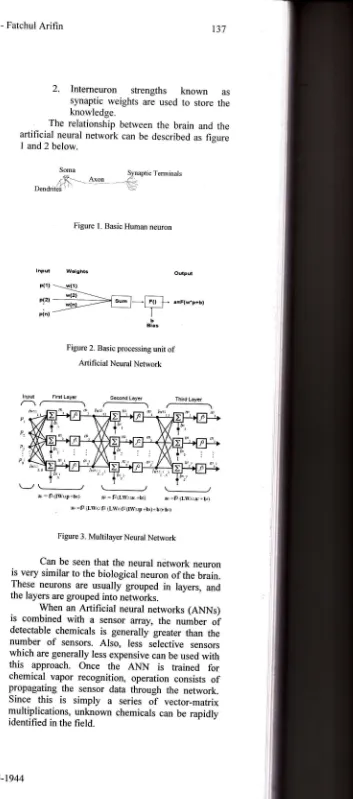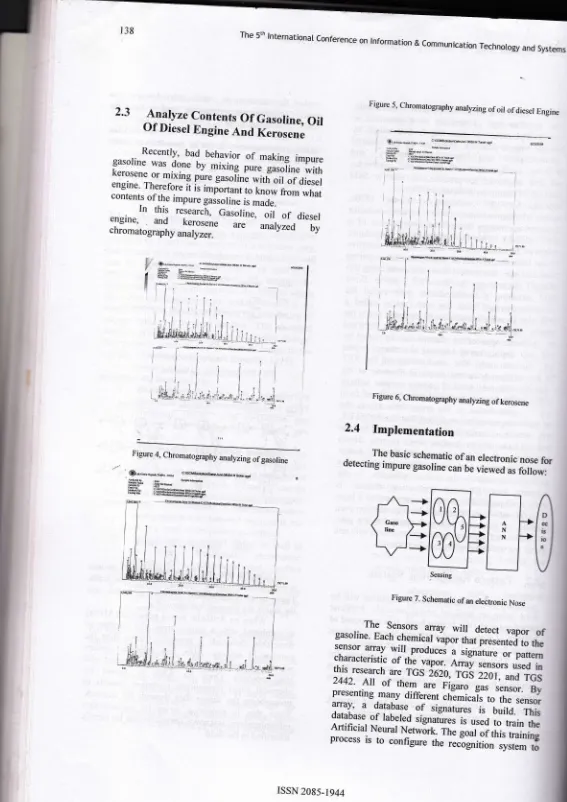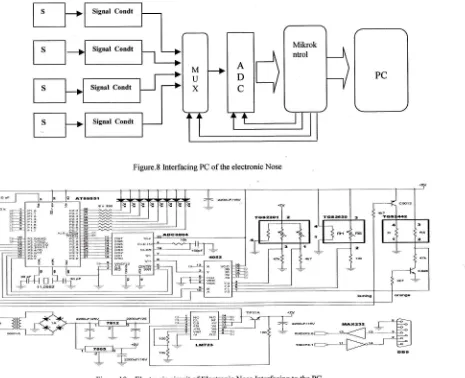The
sth
lnternational
Gonference
on
Informatinn
& C*mmunication
Anny Yuniarti,
S.Kom,
M.Comp
Sc.Informatics
Department,
Faculty
of
Information Technology,
Sepuluh Nopember
Institute
of
Technology
Secretary
Radityo Anggoro,
S.Kom, M.Eng.Sc
Website and Desisn
Ridho
Rahman
Hariadi, S.Kom
HadziqFabroyir,
S.Kom
Proceeding and
Registration
Chastine Fatichah,
S.Kom,M.Kom.
Umi
Laili
Yuhana, S.Kom, M.Sc.
Dini
Adni
Navastara,
S.Kom
Wijayanti
Nurul
Khotimah, S.Kom
Ratih
Nur
Esti
Anggraini, S.Kom
Erina Letivina Anggraini, S.Kom
Tour
and
Promotion
Victor
Hariadi, S.Si.,M.Kom
Bagus
Jati Santoso,
S.Kom
Arya Yudhi
Wijaya, S.Kom
Seminar
Kit
and
Accommodation
Bilqis
Amaliah, S.Kom.M.Kom
Nurul
Fajrin
Ariyani,
S.Kom
Contact Address
Informatics
Department,
Faculty
of
Information
Technolo gy,
Sepuluh
Nopember
Institute of Technology
Surabaya
Gedung
Teknik Informatika ITS,
Jl. Raya
ITS Keputih
Sukolilo
Surabaya Indonesia
Tel.
+
62-3t-5939214
Fax. +62-31-5913804
Homepage:
http://icts.if.its.ac.id
V1
CI4
CoLLISIoN
AVoIDANCE
SYSTEMFoR
CRowD
SIIVIULATIoN
Noralizatul Azma Mustapha...
CI5
CONSISTENCYVERIFICATION
OFBIDIRECTIONAL MODEL TO MODEL
TRANSFORMATION
Lusiana...
CI6
CREDIT RISK CLASSIFICATION
USINGKERNEL LOGISTIC
REGRESSION-LEAST
SQUARE SUPPORTVECTOR MACHINE
S. P. Rahayu
CI7
CROSS ENTROPYMf,THOD
FORMULTICLASS
SUPPORTVECTOR
MACHINE
Budi Santosa
C18
DATA MINING APPLICATION
FORANALYZING PATIENT TRACK
RECORDUSING DECTSION
TREE INDUCTION APPROACH
Oviliani Yenty
Yu1iana...
CI9
DESIGN OFMONITORING
SYSTEM FOROXIDATION DITCH
BASED ONFUZZY
ASSISTEDMULTIVARIATE STATISTICAL
PROCESSCONTROL
Katherin Indriawati..
CzO
DEvELoPMENT
PROCESSoF
A DRIyING SIMULAToR
Mohd Khalid
Mokhtar...
C2I
DYNAMIC CLOTH INTERACTION INCLUDING
FASTSELF-COLLISION
DETECTION
Nur Saadah Mohd Shapri
C22
ELECTRoNIC NoSE FoR DETECTING
oF
UNPURE.GASoLINE
Fatchul
Arifin ...
C23
ELMAN NEURAL NETWORK WITH ACCELERATED LMA TRAINING
FOREASTJAVA-BALI ELECTRICAL LOAD TIME
SERIESDATA FORECASTING
F. Pasila...
C24
ENHANCED
CoNFIx
STRIPPING STEMMER AND
ANTSALGoRITHM
Agus Zainal
Arifin...
C25
FILTERING PORNOGRAPHIC WEBPAGE MATCHING
USINGTEXT AND
SKIN COLORDETECTION
Yusron
Rijal
...
C26
FAZZY LOGIC CONTROL
SYSTEMFORDEVELOPING
EXPERT SEATRANSPORTATION
Aulia Siti Aisjah
Arifin
...
C27
GENETIC ALGORITHM
BASEDFEATURE SELECTION
ANDUNBIASED
PROTOCOL
FORCLASSIFICATION
OF BREAST CANCER DATASETSZurainiAli
ShahArifin...
...i..
C28
GRID APPROACH
F'ORX-RAY
IMAGE CLASSIFICATION
Benalya...
C29
HAND MOTION DETECTION
ASINPUT
ONFIGHTER GAMES
Chastine
F...
C3O
ILLUMINATION TECHNIQUES IN AUGMENTED REALITY
FORCULTURAL
HNRITAGE
ZakiahNoh...
C3I
IMPLEMENTATION
OFAUDIO SIGNAL
PROCESSING FORAUTOMATIC
INDONESIAN MUSICAL
GENRECLASSIFICATION
Byatriasa Pakarti
Linuwih...
C32
IMPLEMENTATION
OFSPATIALFAZZY CLUSTERING IN DETECTING
LIP
ON
COLOR IMAGES
81-86
87-94
95-98
99-106
t07-112
113-120
121-126
127-134
135-,140
141-148
149-1s8
159-166
167-178
179-184
I 85-l 90
191-196
197-202
203-210
211-216
Agus Zainal
Arifin
, Sri Hastuti r'2'3
Electronic
r**f*:,
T3iy:*r;;".;;g,
yogyakarra State UniversityKTpr.r
IINY
Karangmalangi
o gyZLura 3chemical Department,
Filr,;i'N4;;;,#1f't'fr:":.r*,"&1"ru,
Maret Universiry Jl.
Ir
Sutami, Surakartafatchu I@uny.ac.
id
r, hastuti_uns@yahoo.co.id 3ABSTRACT
Gasoline
is
the main
fuel
for all
almost
vehicles. The pure gasoline
is
impotant
,o-t""p
vehicle
operating. Unfortunatelyit.r. ir'u
Uua
behavior
in
our
societythat
mixesg"r"iilJ
*tf,
another material.Of
courselt
witi
contaminate g1-9llne and desrroy rhe machine. For alongtime
(unhl
now) testof
pure gasoline has been cJnductonly
I
laboratory, becauseit
is
not
a
simpleprocedure and the cost is so expensive. The samples
ae
collected
from
everywhire, and
tfrenlt
isbryugt,
to
the
laboratory.This
method
is
not efficient. The device thatian
detect pure gasofinequick and efficient is needed.
-In
this
paper,will
be
proposed ElectronicNosethat can distinguist pu.e gusotin"
n*-irnp*.
gassoline.
This
devicewill
sensegarotine, ttr"n gives
ouput
aboutits
status,wheth"i pu." o.
not.Electronic Noses
are
electronica"ui.ilfrui'trr"
Sility
likes human nose. These device istfically
rray of
sensorsused
to
characterize.o_pf.i
samples. Arrays of sensor in these device
i.
"ouy,
of4
gas sensors. The data generated byeach
r"nro.
i:^l_T:"rr"d
.ly.
u.
neural network
algorithm.behavior
in
our
societythat
mixes gasoline withanother
material.
Of
courseit
wili
contaminategasoline and destroy the machine. For a long time
(until
now) testof
pure gasoline has been cJnductonly
at
laboratory, becauseit
is
not
a
simpleprocedure and the cost is so expensive. The samples
are
collected
from
everywhere,and then
it
isbrought
to
the
laboratory.
This
method
is
not efficient.]h3
imnure gasolinewill
harm our society.The vehicle
will
damage quickly. On the ottrer tranarr wllt
mcrease emissionof
CO,
finally
it
will
destroy the environment.
-
On
this paperwill
be proposed .ElectronicNose',
an electronic device that LasU"tuuio,
fit.
human nose,
for
smelling impuregurrotir..-f*o
main. component
of
Elictronose-are
arrav
of
chemical sensor and artificial
n.*ul ,.t*o.k.
-'
MODEL, ANALYSIS,
DESIGN,
AND
IMPLEMENTATION
The
two
main componentsof
an electronicnose
are the
sensing systemand the
automatedpattern recognition system.
Ferceptron modei is chosen,
b";;;r;';t
r"ijr'"nry
two
condition output,pure and
impureju*fi"".
lI"
l..*ul
network algorithm*u,
*,
uiine
pC.Asembty (microcontroller software),
Matlab]
ana Visual Basic Language programming were used inThe
sensing system canbe an
array
of
system.
From the experiments can be concluded that
system
has been
work
properly
with
90o/o
;y.
Hope that the system can give solution togasoline purity problem in our society.
: Electronic Nose, Neural Network,
Array Sensor.
INTRODUCTION
Gasoline
is
the main
fuel
for
all
almost
]!,
^lf--ryt
.gasolineis.important
t"
k;;
icle
operating. Unfortunatelyihere
i, ,;;l
several
different
sensing elements (e.g., chemicalsensors), where each element
*rur*"i
a different
property
of
the
sensed chemical,or
it
can be
asingle sensing device (e.g.,
spectromeier) tfratproduces
an
array
of
measurementsfor'
each
chemical, or a combination
of
both. Each chemicalvapor that attached
to
the sensor array produces alig1lture or
pattern characteristicof
tfr"'rufo.. ey
feeding many different
chemicalsto
the's"nsor
aray, we
canbuilt a
databaseof
signatures. Thisdatabase
of
labeled signaturesis
useiclto train
thepattern recognition system. The goal of this training
process
is
to
configurethe
recognitionsystem to
produce unique classifications
of
each chemical soan automated identification can be implemented.
.,
th:
quantity and complexityoithe
data, thatcollected
by
sensors anay,ian.rt"
.onr"riio.rut
135
136
chemical analysis
of
datain
an automated fashiondifficult. One
approach
to
chemical
vaporidentification is
to
build an arrayof
sensors, where each sensor in the array is designed to respond to aspecific chemical.
With
this approach, the numberof
unique sensors mustbe
at
least equalto
thenumber
of
chemicals thatwill
be monitored.It
isexpensive and
difficult to build
ahighly
selectivechemical sensor.
2.1
Development
Of
Sensor
A
chemical sensoris
a
devicewhich
giveresponds to a particular analyze
in
a selective way,that means
of
a reversible chemical interaction andcan
be
used
for
the
quantitativeor
qualitativedetermination
of
the
analyses.All
sensors arecomposed
of
two
main regions: thefrst
is
wherethe selective chemistry occurs and the second is the transducer. The transducer allows the conversion
of
energy
from one form
to
another.The
chemicalreaction produces a signal such as a
color
change,fluorescence, production of heat
or
a changein
theoscillator frequency of a crystal (Cattrall, 1997).
Several categories of transducers are
available and these include:
L
Electrochemical,
such
as
ion-selectiveelectrodes (ISE), ion-selective
field
effecttransistors
(FET),
solid
electrolyte
gassensors
and
semiconductorbased
gas sensors.2.
Piezoelectric,e.g.
surface acoustic wave(SAW) sensors. Piezoelectric materials are
sensitive
to
changesin
mass, density orviscosity and, therefore, frequency can be
used as a sensitive transduction parameter
(Hall,
1990). Quartzis
the most
widelyused piezoelectric material because
it
canact as a mass-to-frequency transduc'er.
3.
Optical, such as optical fibers, aswell
asthe more
haditional
absorbance,reflectance,
luminescenceand
Surface Plasmon Resonance (SPR) techniques.4.
Thermal systems,in
which
the heatof
achemical reaction
involving
the analyze ismonitored
with
a
transducersuch as
athermistor.
For special purpose, Electronic nose, the
following
sensors have been developed:l.
Catalytic
or tin
oxide
sensor:
A
commercially
available Taguchi
Gas Sensor (TGS) can be andwidely
used asthe
core-sensing elementin
array
basedodor
detectors.
This
consists
of
anelectrically
heatedceramic
pellet
uponwhich
athin
film of tin
(II)
oxide dopedThe 5th lnternationat Conference on lnformation & Communication Technology and Systems
with
precious metals is deposited-fi"
1tqoxide
is
an
n-type
semiconductor andwhen oxygen adsorbs on the surface, one
of
the negatively charged oxygen speciesis generated depending on the temperature.
This
result
in
the
surface
potentialbecoming increasingly negative
and
the electron donors within the material becomepositively
charged.When
an
oxidizablematerial comes into contact with the sensor
surfaces the adsorbed oxygen is consumed
in
the resultinga
chemical reaction. Thisreduces the surface potential and increases
the conductivity of the
film'
Several recentdevelopments with tin oxide detectors have
led to further advantages over the Taguchi
sensor,
which
generally requires
highpower consumption and high temperatures.
These include the fabrication
of thin-film
tin (II)
oxide
anays
using
Planarmicroelectronic technology leading
toreduced
size and lower power use,
theproduction
of
thin-filrn
sensors
bychemical vapor deposition and the use
of
screen printing to make
thick-film
sensors.2.
Conducting polymer sensors:Many
othermaterials are
conducting
(orsemiconducting) and show
a
variation inconductivity. Conducting polymers
arevery popular in the development of gas and
liquid-phase sensors
with
poly pyrrole andpoly
aniline being
the
favored
choices.Materials
used
to
make
conductingpolymers tend
to
have some
cornmonfeatures, including the ability to form them through either chemical or electrochemical
polymerization and
the ability
to
changetheir
conductivity through oxidation
or reduction. Conducting polymers are beingwidely
used as odor-sensing devices,for
several major reasons ,there are :
a. the
sensors disPlaY
raPidadsorption
and
desorPtion Phenomena at room temPerature;b.
power consumPtion is low;c.
specificity can
be
achieved bYmodifYing
the
structure
of
thepolymer;
d.
they are not easily inactivated bycontaminants;
e. they ate very
sensitive
tohumidity.
3.
Acoustic
wave
sensors:AT-cut
quartzcrystals
(+35-l5p
orientationof
the platewith
respectto
the
crystal plane)
arefavored as piezoelectric sensors because
of
their
excellent
temperature coefficients.The type
of
acousticwave
generated inpiezoelectric materials
is
deiermined bythe
crystalcut;
thicknessof
the
materialused
and by the
geometry
andconfiguration
of
the
metal
electrodesemployed
to
producethe
electric
field(Thompson
&
Stone, 1997).4.
MOSFET rechnology:
In the
1970s,improvements
in
semiconductortechnology
led
to
the
developmentof
aFET.
This
is a
very
high
impedancetransistor
and the most
sensitivemeasurements of small potentials requiring
very low current flows are made using
thii
technology.
In
the FET,
current
flowsalong
a
semiconductorpath called
the channel,from one end that
is
called
asource electrode.
At
the opposite end is thedrain
electrode.The effective
electricaldiameter
of
the channel can be varied byapplication
ofa
voltage to a control or gateelectrode.
The conductivity
of
the
FETdepends on
the
electrical diameterof
thechannel.
A
small
changein
gate voltageleads
to a
large variationin
current fromthe
sourceto
the
drain.This allows
thesignal
to
be amplified. For the MOSFET,the thermal oxidation process used to form
the silicon dioxide layer
on
the
siliconsurface
of
the device also forms a doublelayer,
which can
induce
a
conductingchannel
in
the
silicon
substrate.In
theMOSFET,
the
conducting channel
isinsulated from the gate terminal by a layer
ofoxide. Thus, there is no conduction even
if
a reverse voltageis
appliedto
the gate.FET sensors can be operated both with and
without a reference electrode.
2.2
Pattern
Recognition
System
-
In
this research, pattern recognitionwill
bedone using an
artificial
neuralnettiork. Artificial
neural network, like human brain,
it
is composedof
billions of
neurons and organizes themto
performcertain functions.
It
learns through experience.This
systemhas
a
natural plopensity for
storing experiential knowledge and
-making
it
available for later use. It
.ere.bles
the brain in tworEspects:
1.
Knowledgeis
acquired by the networkthrough a process called learning.
2.
Interneuron strengths
known
assynaptic weights are used
to
store theknowledge.
The relationship between the brain and the
artificial
neural network can be described as figureI
and2 below.Soma
.aft-..- - exon
Dendrit6('/)
---'
P{aPtic [image:6.612.243.596.10.809.2]Tenninals
Figure l. Basic Human neuron
b Bi.s
Figure 2. Basic processing unit of
Artificial Neural Network
P.
o:
. iJ =fr (L*i: F (Lll!.!fi(ftV,Jp+br)+br).br)
Figure 3. Multilayer Neural Network
Can be seen that the neural network neuron
is very similar to the biological neuron of the brain.
These neurons are usually grouped
in
layers, andthe layers are grouped into networks
When an
Artificial
neural networks (ANNs)is
combinedwith
a
sensor ar:ray,the
numberof
detectable chemicals
is
generally greater than thenumber
of
sensors.Also,
less
selective sensorswhich are generally less expensive can be used with
this
approach.Once
the
ANN
is
hained for
chemical vapor recognition, operation consists
of
propagating
the
sensor data throughthe
network.Since
this
is
simply
a
series
of
vector-matrixmultiplications, unknown chemicals can be rapidly identified in the field.
U(t)
w(2t
w(n
138
The 5th rnternationat conference
on rnformation & communication
[image:7.612.19.586.8.810.2]Technotogy and systems
Figure 5, Chromatography analyzingofoil ofdiesel Engine
2.3
Analyze
Contents
Of
Gasoline,
Oil
Of
Diesel
Engine
a"A X".o.",r"
Recently, bad behavior
of
making
impure gasoline was done bv:i:::
:;iI4H
;,1"1ff
fl,:,,1,1,n*Ti,#o,:ll1
englne. Therefore
it
is important toknow from what
contents of the
impure gassoline is made.
ln
rhrs
research,Gasoline,
oil
of
dieselengine,
and
keros,"r,io.nutogii;,y
#i;Xl"
are
anatvzed
bv-ljft*}T",-.,."'
#*..1r i[ffi,F.it#"Iif_#
r6i$- ib@Ehldllei|Jl@FhhGrr4d
__
$
(
ffl
I I
I --l
Figure 4, Chromatography analyzing
of gasoline
{B-,-,.**.*, c@Me&dGsHw.qed
Figure 6, Chromatogaphy analyzing ofkerosene
2.4
Implementation
The basic schematic of an electronic nose for
detecting impure gasoline can be
viewed as follow:
ffi$0
SensingFigure 7. Schematic of an electronic Nose
The
Sensors igasoline.
r""r,
"i..i.ffi
J',1r,T:::r;?lJ
fj
::nro..
arraywill
produceju
,ignutu."
o.-"oun"rncharacteristic
of
thevapor.
Anay sensors used in
this^research are TGS
)aza,ids
iioi'
"#.
ro,
2442.
Ail
of
them are Fjgaro
c*-;;;.
""
presenting many
difflerent ch'emicJls ro",fr"
"r"*o,
array,
a
databaseof
signature,
ir-irjii."'rui,
{at{a1e of
labeled signaturesis
usedto
train theArtifi cial Neural
Netwirk
rr,.
g""i"i
tirjr'#inirg
process
is to
configure therecigni,i"r'ry.rrr"
,"
i
i
.iti
ilt
-, ii
,';d:r'ol.-J-
,;.
produce unique classifications
of
pure gasoline orimpure gasoline. .
In
this
research,An
ElectronicNose
areimplemented
to
the PC. Outputof
the sensor arraycould
not
sendto
the PC directly,
it
is
need aninterfacing system.
The Model
of
artificial neural network
in
thissystem
is
multilayer feed
forward. System has 3layer, they are input layer (32 input), hidden layer
( 1 0 neuron), and output layer (
I
neuron).3
TESTING AND RESULT
Firstly
the
system must
be
trained.
Bypresenting many different chemicals
to the
sensorarray,
a
databaseof
signaturesis
build.
Thisdatabase
of
labeled signaturesis
usedto train
theArtificial
Neural Network. The goal of this trainingprocess
is
to
configurethe recogtition
system toproduce unique classifications
of
pure gasoline orimpure gasoline.
Graph
of
training process,until
reach errorsmaller than 0,1 can be viewed in Figure 1
l.
[image:8.612.282.453.131.200.2]Iffi,,'f;l
ffi##'
Figure 9. Design of Artificial Neural Network
From the figure
canbe
seenthat
until
98epochs, system
could
reachthe goal
(maximumerror is 0,1).The next step, Electronic nose system
was
testedby
giving variation
of
inputs
to
thesystem. According
to
the testing result,it
can beconcluded that system was running well.
Validity
of
the system reach 98.2oh.
Figure.S Interfacing PC ofthe electronic Nose
[image:8.612.41.506.341.719.2]:=:
'
Figure I
0,
Electronic circuit ofElectronic Nose Interfacing to the PC140
'
Figure I l. Training process4
CONCLUSION
According
to
the
testing result,
It
can
be concluded that:l.
Electronic Noseis
consistedof
gas sensorarray.
Intelligent
nerveof
the
system wasimplemented
by
artificial
neural
network algorithm.2.
Electronic Nose has knowledge, soit
couldclassify variation of vapor/gas correctly.
3.
Validity
of the system reaches 98.2%.REFERENCES
[]
CarpenterG.A.,.
Grossberg S,. Markuzon N,.Reynolds
J.H,
and.
Rosen
D.B,
"FuzzyARTMAP:
A
Neurql NetworkArchitecturefor
Incremental Supervised
Learning
of
AnalogThe 5th lntemational Conference on lnformation & Communication Technotogy and Systems
Multidimensional
Maps,"
IEEE
Transactionson Neural Networks, vol. 3, 698 -713.
Gardner J.W,. Hines
E.L,
andWilkinson
M.,(1990). Application
of
Artificial
NeuralNetworks
to an
Electronic Olfactory System. Measurement Science and Technology,vol.
l,
Keller, R.T. Kouzes, and. Kangas L.J, (1994),
"Three Neurql Network Based Sensor Systems
for
EnvironmentalMonitoring,"
IEEE Electro94
Conference Proceedings,Boston, MA,
pp.377-382.
Moriizumi
T,. NakamotoT,
and. Sakuraba Y,(1992),
"Pattern
Recognitionin
ElectronicNoses by
Artificial
Neural Network Models," Sensors and Sensory Systems
for
an ElectronicNose.Kluweer Academic Publishers,
J.W.Gardner and
PN.
Bartlett (ed.s), Amsterdam,The Netherlands, pp. 217-236.
Pisanelli A.M, Qutob A.A.,. Travers P,. Szysko
S and Persaud
K.C.,
(1994) "Applicationsof
Multi Array
Polymer
Sensors
to
Food Industries,"Life
Chemistry Reports,vol.
ll,
pp.303-308,
Pope
K,
(1995) "Technology Improves on the Nose As Science Tries to Imitate Smell," WallStreet Joumal, pp.
Bl-2,.
Roger Jang,
T.S.
(1999), Neuro Fuzzy AndSoft Computing
Shurmur
H.V.
(1990). "Thefifth
sense: on thescent of the electronic nose," IEE Review, pp.
95-58,
141
l2l
t3l
17l
t8l
tsl
t6l


